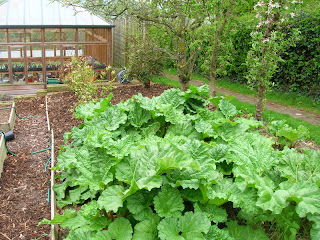 |
| The apple tree asparagus - where our quest began! |
When we moved to Springfield there were a few spears of asparagus growing under an old apple tree but this was not the best place for a decent crop. We thought there would be no problem in setting up a proper asparagus bed. However, gardening is never that simple and we were disappointed with our first batch of ‘Gijnlim’ crowns.
Despite Doc’s careful preparation of the site, the crowns hardly grew at all and what was there was somewhat understated to say the least. Anyway, we decided to give the bed another go the following year. Doc re-prepared the site and I invested in yet another batch of one year old crowns. We read up on the subject and carefully weeded the area by hand so as not to disturb the plants. We watered and fed the crowns (even talked to them!) and in return the feathery, fern like foliage sprouted well into the autumn. Then the awful winter arrived and temperatures fell to minus 15 degrees C. We looked at the asparagus bed and wondered if we could have spent our money better elsewhere on the plot.
March came and went and the asparagus bed continued to look brown and bare. Then about 3 weeks ago, Doc discovered a small, purple asparagus spear pushing through the earth. The next day there was another one. The next day, he found that the first one had been munched! He set up some mouse traps and within a few days, all ten crowns were happily growing away. We will harvest the spears for 6 weeks and hopefully next year we can extend the cropping period to 8 weeks.
We lost a treasured 10 year old bay tree during the cold winter which is very sad. It was given to me as a cutting by a friend and a replacement will not be the same. But in gardening, that’s how it is. For every failure, there is a success waiting to happen. And this week the success is the asparagus. We are taking full advantage of it.


